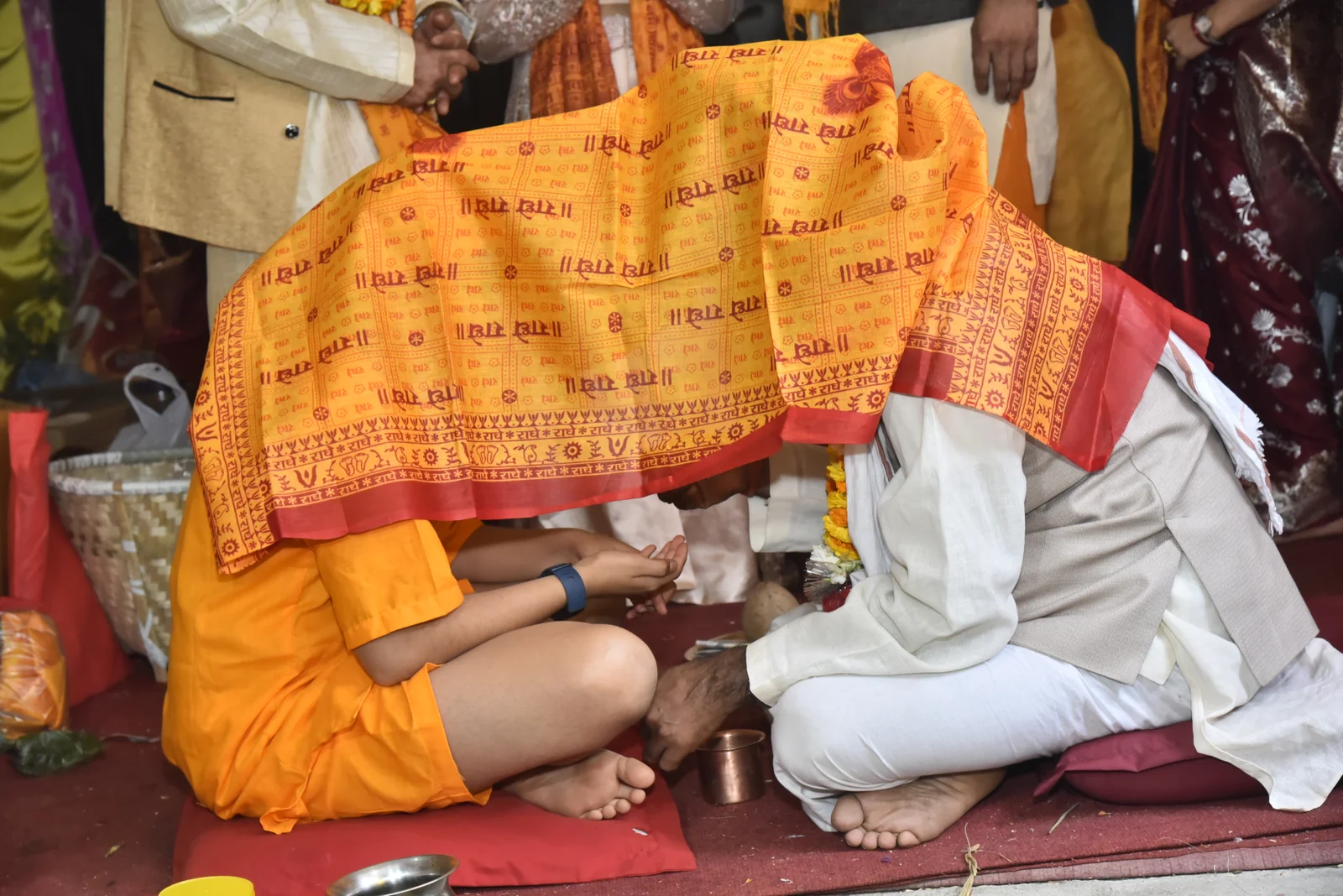Share this Article
The Mandal (मण्डल), originating from the ancient spiritual traditions of Hinduism and Buddhism, plays a significant role in Nepali culture and religious practices. It is a geometric design that serves as a symbolic and spiritual map, representing the cosmos, the universe, and the intricate relationship between the microcosm (individual) and macrocosm (universe). In Nepal, the mandal is not just an art form, but a profound expression of the sacred, conveying the unity and interconnectedness of life. Through its geometric patterns and symbolic meanings, the mandal serves as a tool for meditation, a focus for prayer, and a means of spiritual transformation.
1. Origins and Historical Context of the Nepali Mandal
The mandal has its roots in the ancient traditions of Hinduism and Buddhism, both of which have profoundly influenced Nepali culture. The term "mandala" comes from the Sanskrit word "mandala," meaning "circle" or "center." The circle represents the universe, and its center symbolizes the origin of all creation, the divine source.
In Hinduism, mandalas are often associated with the construction of temples, altars, and sacred spaces. The geometric structure of a mandal symbolizes the divine order of the universe, with each shape, line, and point carrying spiritual significance. For Buddhists, particularly those of the Vajrayana tradition, mandalas serve as visual representations of enlightened beings and the cosmic realm, providing a way to focus meditation and achieve spiritual insight.
The concept of the mandal has been passed down through generations in Nepal, influencing religious, architectural, and artistic practices. Today, it continues to be a vital element of Nepali art, representing not just religious devotion but also a connection to the larger cosmos.
2. Sacred Geometry and Symbolism
At its core, the mandal embodies sacred geometry, an ancient belief that certain geometric patterns and shapes possess inherent spiritual power. These patterns reflect the sacred order of the universe and the divine intelligence that governs all creation.
2.1 The Circle
The circle, the most fundamental element of the mandal, symbolizes wholeness, unity, and the cyclical nature of life. In Hinduism and Buddhism, the circle represents the eternal, unchanging universe, the infinite, and the divine. It is a perfect, closed shape that has no beginning and no end, symbolizing the eternal cycle of creation, preservation, and dissolution.
2.2 The Square
Often enclosed within the circle, the square in a mandal represents the physical world, with its four corners symbolizing the four cardinal directions (north, south, east, west). The square is a stable, grounded shape, offering a contrast to the infinite and transcendent nature of the circle. In Hindu traditions, the square represents the material world, while the circle stands for the spiritual realm.
2.3 Other Geometric Shapes
Mandalas often incorporate other geometric shapes such as triangles, lotus petals, and spirals. Each shape has its own symbolic meaning:
- Triangles: Triangles are often associated with deities and divine energies. In Hinduism, an upward-pointing triangle symbolizes the god Shiva, while a downward-pointing triangle represents the goddess Shakti. Together, these triangles represent the balance of male and female energies in the universe.
- Lotus Petals: The lotus flower, a common motif in Nepali mandalas, is a symbol of purity, enlightenment, and spiritual awakening. The petals represent the unfolding of spiritual potential.
- Spirals: The spiral is often used to depict the journey of the soul or the path of spiritual evolution. It represents movement toward the center, symbolizing the quest for unity with the divine.
2.4 The Center
The center of the mandal is the focal point of the design, representing the divine essence, the source of creation, or the seat of the deity. It is often depicted as a sacred space or a deity’s image, signifying the ultimate goal of meditation—to connect with the divine and attain spiritual enlightenment. In many Nepali mandalas, the center is the point from which all other shapes and patterns emanate, symbolizing the interconnectedness of all things.
3. Mandalas in Nepali Art and Architecture
In Nepal, mandalas are not confined to paper or canvas. They are integral to architecture, painting, sculpture, and temple design, serving both decorative and spiritual purposes.
3.1 Mandalas in Newar Art
The Newar community, an indigenous group of the Kathmandu Valley, is particularly known for its intricate mandala designs. These mandalas are used in religious practices, especially in Vajrayana Buddhism, which is predominant among the Newars. The mandalas in Newar art are often created using fine, colorful patterns and may represent deities, Buddhist realms, or cosmic landscapes. They are frequently seen in thankas (traditional Buddhist paintings), wooden sculptures, and ritual objects.
3.2 Mandalas in Temples and Stupas
Many Nepali temples and stupas incorporate mandalas in their design. The Swayambhunath Stupa (also known as the Monkey Temple) in Kathmandu is a prime example. The stupa's structure includes symbolic mandalas that represent the universe, with the central dome symbolizing the world and the spire reaching toward the heavens. Similarly, the Boudhanath Stupa, a UNESCO World Heritage site, features mandalas on its massive white dome, reflecting the cosmos and serving as a focal point for pilgrims' prayers.
The design of Nepali temples often follows the principles of sacred geometry, with specific arrangements of spaces, walls, and openings that reflect mandalic patterns. These designs are not only functional but also serve as a meditative space for those entering the temple, guiding them on a spiritual journey as they move inward toward the sacred center.
4. Mandalas in Rituals and Meditation
Mandalas are not just decorative elements but are also used as tools for spiritual practice and meditation. They are often seen as a map for meditation, guiding the practitioner toward the center of the universe—symbolizing the journey inward to self-realization and enlightenment.
4.1 Mandalas as Meditation Tools
In both Hinduism and Buddhism, mandalas are used as focal points during meditation. Practitioners visualize or contemplate the mandala, using its geometric patterns to help center their mind and facilitate a connection with the divine. In Buddhist practice, monks often draw or color intricate mandalas as part of their spiritual discipline, a process that symbolizes the purification of the mind and the cultivation of mindfulness.
In Nepal, people often use small, hand-drawn mandalas or large, intricate designs on prayer flags and walls to aid in meditation. These sacred designs act as a way to focus the mind, ward off negative energies, and attract positive blessings.
4.2 Ritual Uses
In Nepali religious rituals, mandalas are used as offerings to deities. A common ritual practice involves creating a mandala on the ground or on an altar, filled with offerings such as flowers, grains, and incense. The mandala serves as a visual offering, symbolizing the devotee’s respect and devotion to the divine. By meditating on the mandala and focusing on its symbolism, the devotee seeks spiritual growth and the purification of their karma.
5. Mandalas in Contemporary Nepali Art
While traditional mandalas continue to be used in spiritual and religious contexts, contemporary Nepali artists are also incorporating mandalic patterns into modern art forms. Many artists blend traditional and modern aesthetics to create new interpretations of the mandal. These artworks, often infused with vibrant colors and intricate patterns, are displayed in galleries, public spaces, and homes.
The resurgence of interest in mandalas in contemporary Nepali art reflects a renewed appreciation for the deep spiritual and cultural heritage associated with this form of sacred geometry. Artists are increasingly using mandalas to explore themes of inner peace, unity, and the connection between the individual and the cosmos.
6. Conclusion
The Nepali mandal is a profound representation of spiritual knowledge, cosmic order, and divine presence. Whether used in religious rituals, meditation, or as an artistic expression, the mandal transcends time and place, continuing to inspire and guide individuals on their spiritual journey. With its intricate geometric patterns and deep symbolic meanings, the mandal serves as a reminder of the interconnectedness of all life and the eternal dance between the material and spiritual worlds.
Categories:
Travel & Tourism
,
Culture & Traditions
,
Lifestyle & Local Life
Tags:
tradition







